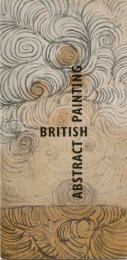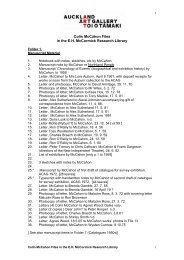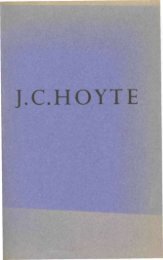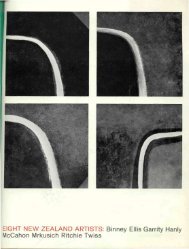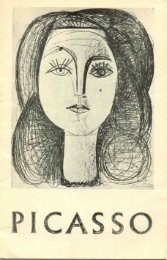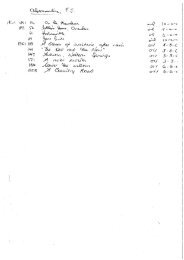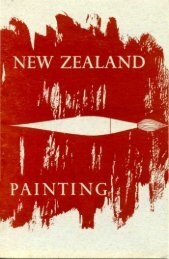WoodWooden objects range in size from small boxes to largecanoes. In many cases they are not solely made of wood,but include materials such as metals, glass, shells, feathers,etc. When caring for artefacts made of a variety ofmaterials the preservation requirementsof each must be taken intoconsideration and if neccessarycompromises made to ensure theoverall preservation of the object.Causes of DeteriorationExtremes of temperature, fluctuationsof humidity and biologicalattack are principally responsiblefor the deterioration of wood. Thisapplies equally to carvings, andornaments such as combs, artefactssuch as digging-sticks, bailers, weaponry, canoes, andfurniture.Temperature and Humidity—extremely hot and dryconditions will cause wood to shrink and crack.Alternatively, cold and damp conditions will cause woodto swell and warp. Sudden fluctuations in temperatureand humidity will accelerate these processes. For example,wooden items obtained in moist tropical regions andtransported to drier countries commonly develop seriouscracks as moisture is lost from the wood. This canbe seen in collections brought back from Melanesia bymissionaries in the 19th century, and in modern-daycarvings from Papua New Guinea. Similar damage mayoccur if items composed of wood are exposed to hot sunlightduring the day and to cold conditions at night.Biological—wooden artefacts in museums are particularlysusceptible to attack fromthe common house borer and, to alesser degree, the New Zealand drywoodtermite. Fumigation withmethyl bromide is an efficientmethod for dealing with borer, butthis can only be carried out by registeredpest controllers and is soonto be banned in New Zealand. Donot use home-made remedies asthese can grossly discolour woodwithout necessarily eliminating thepests. In some cases borer infestationswill be restricted to a small part of an artefact andthis can be treated with a commercially available pesticide.Before using such a product contact a conservatorfor advice as to whether it is the appropriate treatmentfor your infested artefact.Surface moulds such as mildew and wood-rottingfungi are potentially destructive to museum collectionsand to buildings. They thrive in damp and unventilatedconditions. Carvings are particularly susceptible to dryrot and should be inspected regularly to see whether oldinfested areas are still dormant and that new growthshaven’t developed (see also page 7).44
WoodHandlingDo not alter decoration finishes on carvings. Maori carvingswere once painted red or black by museum staff inthe misguided belief that they were recreating the originalappearance of such pieces. If a carving is unpaintedthere is no justification in assuming that it was oncepainted. Similarly, carvings with old paintwork on theirsurfaces must not be ‘touched up’. Painted carvings mustnot be stripped of paint until a thorough investigationinto their history has been completed. Only then can itbe decided that a particular paint finish is inappropriate,and can therefore be removed by trained conservators.Often in areas where land drainage is being carriedout, waterlogged carvings are excavated, Whenever possiblekeep the find in very damp conditions or, if sizeallows, put the carving in a water bath. Do not attemptto treat the artefact yourself but contact a conservator.Do not use linseed oil or commercial furniture polishescontaining oil on wooden artefacts. Oil collects dirt andbuilds up grimy layers on the surface of the wood.Do not use silicone waxes and polishes, as oncethey are applied they cannot be removed, and thereforepermanently change the original finish.Advice on Furniture—do not carry chairs by thetop rail, heavy pieces (such as desks, heavy tables andsideboards) by the top, or upholstered pieces by thearms. Instead, pick them up by the frame, seat rails, orbases.Do not move heavy pieces without covering themto protect against bumps, scratches and rubbing.Rubbing against painted surfaces can embed paint in thefinish; this is very difficult to remove and can cause permanentdamage.Use all floor-cleaning equipment with care. Muchdamage is done to the bases (legs, feet, bottom rails) offurniture through improper use of such equipment.When painting walls or woodwork where the furniturecannot be moved out of the room, do cover it completely.A surprising amount of furniture which comesfor conservation has dry, hard paint splatters on the finish.If the furniture is damaged, keep any part that hasbeen broken off. Put it in a labelled container as this willassist in the conservation process.Furniture should not be placed in direct sunlight.This will cause fading and deterioration of finish andfabric. Do not attach stick-ons, masking-tape or anyother gummed tapes to the finish. They are difficult toremove and may cause damage.Linseed oil mixtures should not be used as a polish.You will eventually get a build-up of oils which collectdirt and darken the finish.Do not apply wax to unfinished wood. Wax is not afinish itself; it is a protective coating to be used over afinish. Once wax is applied to the wood it is very difficultto remove and will discolour with age. Wax should not beapplied over a dirty finish; clean it first. When a finishbecomes worn and dull, and will not shine when buffedwith a hard cloth, do not rewax.As with other wooden items, regularly check furniturefor insect infestation, mould and mice (see alsopage 6).Storage and displayBefore bringing new artefacts into the storage area,check for insect infestation such as borer-holes and, ifnecessary, arrange treatment.It is important that wooden items, whether on displayor in storage, be kept in a mild environment.Ideally, conditions should be maintained at about 20°Cand between 50 and 60% relative humidity. It is possibleto avoid temperature and humidity problems by takingreasonable precautions. Wooden objects should never beplaced in direct contact with outside walls or cold anddamp floors with no air circulation. Lighting should bekept to a minimum, and wooden items should never beleft in direct sunlight.Display techniques should never damage or permanentlychange a wooden artefact. If problems areencountered with the display of a particular artefact,consult a conservator.45



